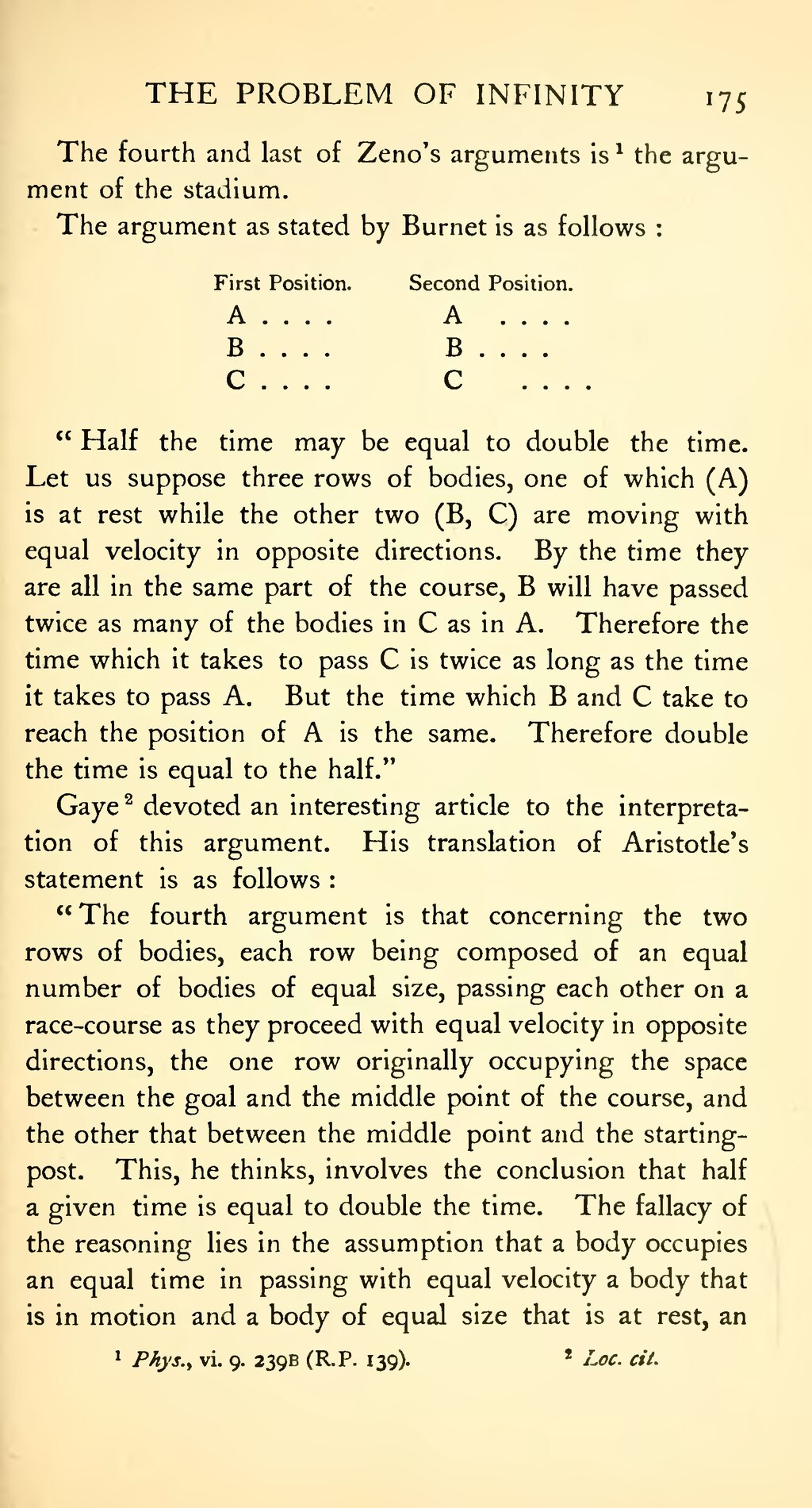The fourth and last of Zeno’s arguments is[1] the argument of the stadium.
The argument as stated by Burnet is as follows:
| First Position. | Second Position. | ||
| A . . . . | A . . . . | ||
| B . . . . | B . . . . | ||
| C . . . . | C . . . . |
“Half the time may be equal to double the time. Let us suppose three rows of bodies, one of which (A) is at rest while the other two (B, C) are moving with equal velocity in opposite directions. By the time they are all in the same part of the course, B will have passed twice as many of the bodies in C as in A. Therefore the time which it takes to pass C is twice as long as the time it takes to pass A. But the time which B and C take to reach the position of A is the same. Therefore double the time is equal to the half.”
Gaye[2] devoted an interesting article to the interpretation of this argument. His translation of Aristotle’s statement is as follows:
“The fourth argument is that concerning the two rows of bodies, each row being composed of an equal number of bodies of equal size, passing each other on a race-course as they proceed with equal velocity in opposite directions, the one row originally occupying the space between the goal and the middle point of the course, and the other that between the middle point and the starting-post. This, he thinks, involves the conclusion that half a given time is equal to double the time. The fallacy of the reasoning lies in the assumption that a body occupies an equal time in passing with equal velocity a body that is in motion and a body of equal size that is at rest, an
